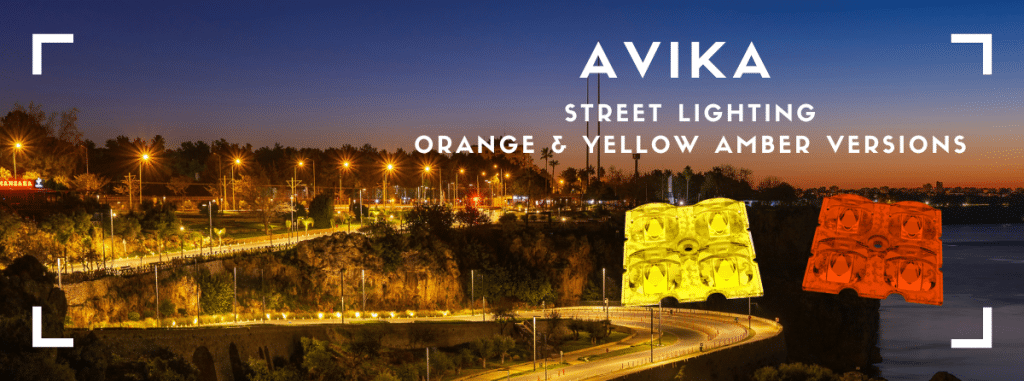Reading time : 5 minutes
Last update : April, 2025
Urban amber street lighting & wildlife friendly measures
Historically, many old cities glow with a nostalgic amber hue, a legacy of sodium lamps that lend warmth and charm with yellow-orange hue to urban landscapes. For cities, preserving amber lighting is about more than heritage; it also reduces glare and enhances the visual comfort of urban spaces.
In natural environments, excessive blue light can disrupt the behaviour and physiological processes of wildlife, such as navigation, feeding, and reproduction. Many species rely on specific light cues tied to moonlight or other natural cycles, and poorly designed artificial lighting can cause confusion, stress, and population declines. Amber lighting reduces these risks, allowing urban development to coexist more harmoniously with nature.
Many coastal regions, particularly in areas like Florida, Australia and the Caribbean, have laws requiring wildlife friendly lighting during nesting seasons. Compliance often involves adhering to lighting guidelines established by environmental organizations or local governments such as:
- Emit wavelengths above 560 nm (amber, orange, red) to limit disturbances to animals and insects. For instance, sea turtles are particularly sensitive to blue and white light, these wavelengths disorients sea turtle hatchlings who use natural light from the moon and stars reflected on the ocean to navigate towards water. Artificial lighting from buildings, streetlights, and other sources can cause sea turtles to head inland instead of toward the sea, which increases their risk of predation, dehydration, and death.
- In addition to proper wavelength, it is recommended to use fixtures that direct light downward, reducing skyglow and habitat intrusion.
How optics address this need ?
With the transition to energy-efficient LEDs, maintaining this aesthetic can be challenging due to the high cost and inefficiency of LEDs at 1800K – 2200K CCT and the LEDs available in the market are often either too yellow or too white compared to conventional sodium lamps with yellow-orange hue.
However, by using precisely wavelength optimized optics to achieve this amber effect, it is possible cost-effectively to create efficient illumination with right wavelength and minimal energy use.
Why optics are needed in amber lighting ?
- Preventing wavelength “Leakage”
Without proper optics and/or LEDs amber lighting can unintentionally emit wavelengths outside the desired spectrum, potentially attracting insects or disturbing wildlife. By using precise wavelength optimized secondary optics, it’s possible to balance human lighting needs with the preservation of nocturnal ecosystems. - Directing light precisely
Optics ensure light is directed to the specific area where it is needed, reducing light spill into sensitive habitats like roosting sites or foraging grounds. - Maintaining uniform illumination
Proper optics help distribute light evenly, preventing bright spots that could disturb nocturnal animals. - Minimizing backlight, glare and skyglow
Gaggione’s AVIKA optics reduce glare and upward light pollution, preserving dark skies and minimizing ecological disruption. Our unique backlight mask accessories are developed to prevent backlight and can be used for instance in beach-adjacent and rural areas where possible unwanted light leakage backwards must be eliminated.
What differentiates our offering?
At Gaggione, we have developed 2 different colour grades for our AVIKA road lighting lenses: Amber-orange and Amber-yellow.
Orange lenses are mimicking true yellow-orange amber colour (<1900K with 3000K LED) and transmitting ~85% of light between 560nm – 700 nm wavelengths and only 0.5% of < 500 nm wavelengths. Orange optics are not only ideal for architectural applications, but also for nocturnal animals and insects having specialized vision adapted to low-light conditions such as bats and owls.
Yellow lenses are developed to recreate the warm glow of traditional sodium lamps while being as energy-efficient as possible and environmentally friendly. Yellow lenses cut blue light (<1.25% @ 500nm) while providing high CRI (Typically 68) and high efficiency (Typically 83-85%). Yellow lenses are also friendly for sea turtles.
With our optics lighting designers can achieve the perfect balance between preserving heritage, protecting nature, and ensuring modern efficiency.
Nutshell: (add lab curtain photo of LED vs LED with Red lens + relative intensity curve of LED separately and with Red lens)
Orange lenses: CCT: 3000K -> 1900K
CRI: 80 -> 68
LOR: 72%
Yellow lenses: (add lab curtain photo of LED vs LED with Yellow lens + relative intensity curve of LED separately and with Yellow lens)
CCT: 3000K -> 2400K
CRI: 80 -> 68
LOR: 83%
Find more information on our road lighting pages.


